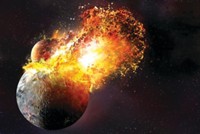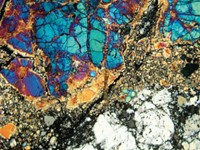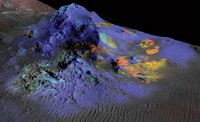Advertisement
Grab your lab coat. Let's get started
Welcome!
Welcome!
Create an account below to get 6 C&EN articles per month, receive newsletters and more - all free.
It seems this is your first time logging in online. Please enter the following information to continue.
As an ACS member you automatically get access to this site. All we need is few more details to create your reading experience.
Not you? Sign in with a different account.
Not you? Sign in with a different account.
ERROR 1
ERROR 1
ERROR 2
ERROR 2
ERROR 2
ERROR 2
ERROR 2
Password and Confirm password must match.
If you have an ACS member number, please enter it here so we can link this account to your membership. (optional)
ERROR 2
ACS values your privacy. By submitting your information, you are gaining access to C&EN and subscribing to our weekly newsletter. We use the information you provide to make your reading experience better, and we will never sell your data to third party members.
Astrochemistry
Martian meteorite holds clues to how planets form atmospheres
Isotopic analysis of krypton in the meteorite complicates astronomers’ understanding of how the red planet formed
by Ariana Remmel
June 24, 2022

Analysis of krypton isotopes trapped in a Martian meteorite could jumble astronomers’ understanding of how the planet’s atmosphere formed.
By piecing together how Mars formed the atmosphere it has today, scientists could glean insights into the early chemistry of our solar system and how Earth obtained an atmosphere favorable to life, says geochemist Sandrine Péron.
A prevailing hypothesis among astronomers is that Mars gained much of its atmosphere from the gases released by the magma oceans that once covered the young planet. Lighter elements and isotopes in this off-gassed atmosphere were depleted over time due to other physical processes to produce the Martian atmosphere we observe today. Scientists have collected meteorites from Mars made of the same minerals as the planet’s mantle to try to understand the composition of those early magma oceans.
Krypton remains inert over millennia so that the ratio of Kr isotopes trapped within these meteorites reflects the chemical composition of the volatile compounds that joined the Martian atmosphere during this molten period. So Péron and her colleagues at the University of California, Davis developed a system to precisely measure the isotopic composition of krypton from within a meteorite called Chassigny.
The team heated a sample of the meteorite to isolate these ancient isotopes and then measured the ratio of 86Kr to 84Kr. They compared that ratio to data collected from the planet’s atmosphere by the Curiosity rover.
The researchers found that the 86Kr-to-84Kr ratio was larger in Chassigny than in the current atmosphere (Science 2022, DOI: 10.1126/science.abk1175). If most of the Martian atmosphere derived from its magma oceans, scientists expected the current atmosphere to have a bigger 86Kr-to-84Kr ratio than the meteorite because of the depletion of lighter isotopes over time. The fact that they found the opposite suggests that Mars continued to obtain Kr and other volatile compounds from the gaseous disk around our young Sun. “We show that the Martian atmosphere can’t be explained simply by outgassing of the mantle as was commonly used in models of Martian atmosphere formation,” Péron says.





Join the conversation
Contact the reporter
Submit a Letter to the Editor for publication
Engage with us on Twitter